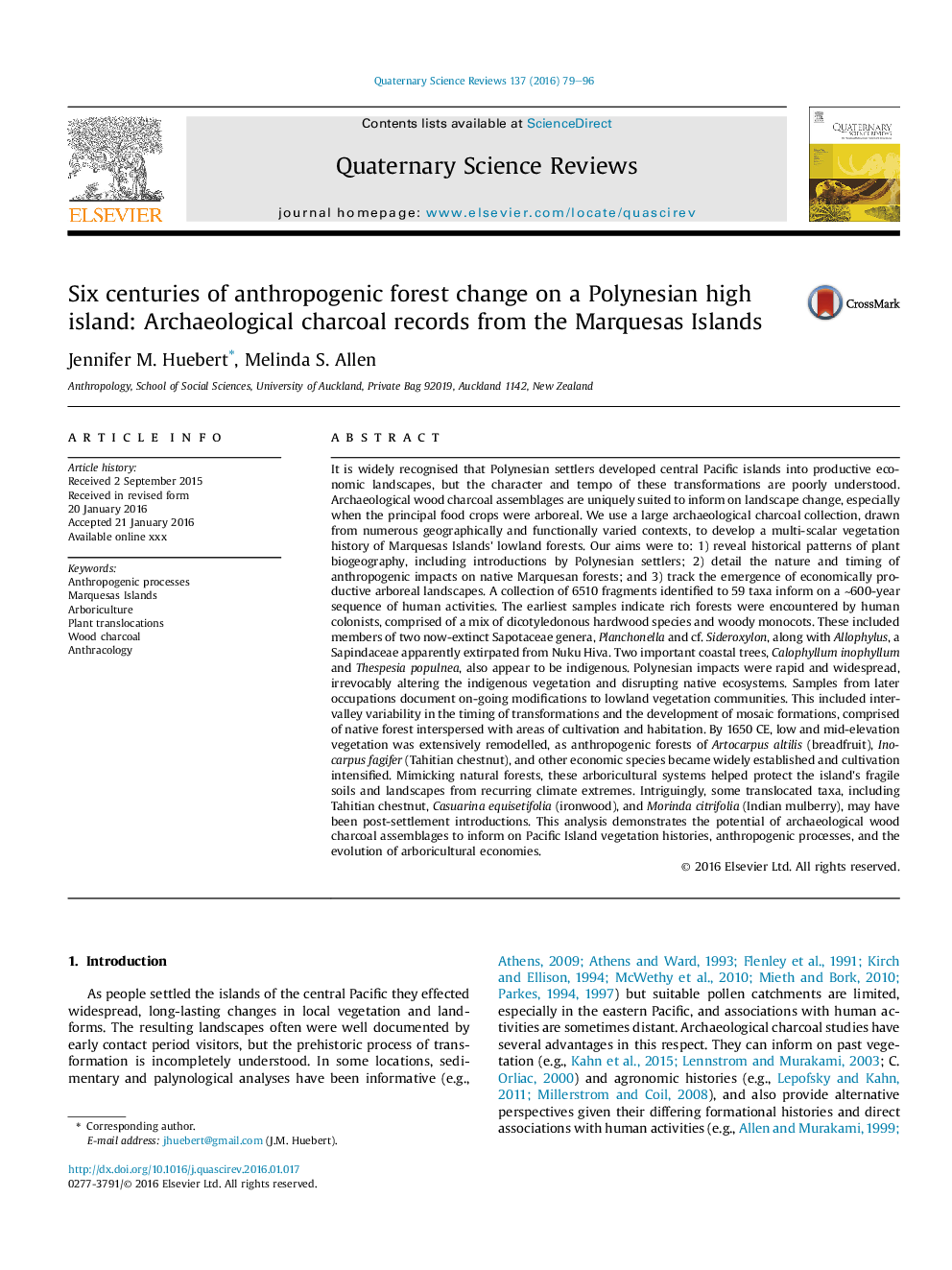| کد مقاله | کد نشریه | سال انتشار | مقاله انگلیسی | نسخه تمام متن |
|---|---|---|---|---|
| 6446509 | 1640798 | 2016 | 18 صفحه PDF | دانلود رایگان |
عنوان انگلیسی مقاله ISI
Six centuries of anthropogenic forest change on a Polynesian high island: Archaeological charcoal records from the Marquesas Islands
ترجمه فارسی عنوان
شش قرن تغییر جنگل های انسان شناسی در یک جزیره پرجمعیت پلینزی: سوابق با ذغال سنگ بادی از جزایر مارکز
دانلود مقاله + سفارش ترجمه
دانلود مقاله ISI انگلیسی
رایگان برای ایرانیان
کلمات کلیدی
فرآیندهای آنتروپنی جزایر مارکز، باغبانی باغبانی، انتقال گیاهان، زغال چوب چوب، انتگرال شناسی،
موضوعات مرتبط
مهندسی و علوم پایه
علوم زمین و سیارات
زمین شناسی
چکیده انگلیسی
It is widely recognised that Polynesian settlers developed central Pacific islands into productive economic landscapes, but the character and tempo of these transformations are poorly understood. Archaeological wood charcoal assemblages are uniquely suited to inform on landscape change, especially when the principal food crops were arboreal. We use a large archaeological charcoal collection, drawn from numerous geographically and functionally varied contexts, to develop a multi-scalar vegetation history of Marquesas Islands' lowland forests. Our aims were to: 1) reveal historical patterns of plant biogeography, including introductions by Polynesian settlers; 2) detail the nature and timing of anthropogenic impacts on native Marquesan forests; and 3) track the emergence of economically productive arboreal landscapes. A collection of 6510 fragments identified to 59 taxa inform on a â¼600-year sequence of human activities. The earliest samples indicate rich forests were encountered by human colonists, comprised of a mix of dicotyledonous hardwood species and woody monocots. These included members of two now-extinct Sapotaceae genera, Planchonella and cf. Sideroxylon, along with Allophylus, a Sapindaceae apparently extirpated from Nuku Hiva. Two important coastal trees, Calophyllum inophyllum and Thespesia populnea, also appear to be indigenous. Polynesian impacts were rapid and widespread, irrevocably altering the indigenous vegetation and disrupting native ecosystems. Samples from later occupations document on-going modifications to lowland vegetation communities. This included inter-valley variability in the timing of transformations and the development of mosaic formations, comprised of native forest interspersed with areas of cultivation and habitation. By 1650 CE, low and mid-elevation vegetation was extensively remodelled, as anthropogenic forests of Artocarpus altilis (breadfruit), Inocarpus fagifer (Tahitian chestnut), and other economic species became widely established and cultivation intensified. Mimicking natural forests, these arboricultural systems helped protect the island's fragile soils and landscapes from recurring climate extremes. Intriguingly, some translocated taxa, including Tahitian chestnut, Casuarina equisetifolia (ironwood), and Morinda citrifolia (Indian mulberry), may have been post-settlement introductions. This analysis demonstrates the potential of archaeological wood charcoal assemblages to inform on Pacific Island vegetation histories, anthropogenic processes, and the evolution of arboricultural economies.
ناشر
Database: Elsevier - ScienceDirect (ساینس دایرکت)
Journal: Quaternary Science Reviews - Volume 137, 1 April 2016, Pages 79-96
Journal: Quaternary Science Reviews - Volume 137, 1 April 2016, Pages 79-96
نویسندگان
Jennifer M. Huebert, Melinda S. Allen,
